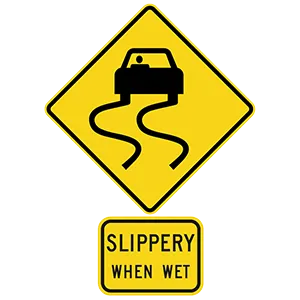FREE Maine DMV Practice Test #12 Page 7 of 7
For January 2025, Maine's DMV practise exams have been updated. It includes questions based on the most important traffic signals and legislation for 2025 from the Maine Driver Handbook. To study for the DMV driving permit test and driver's licence exam, use actual questions that are very similar (often identical!) to the DMV driving permit test and driver's licence exam.
Each question on the practise exam has a tip and explanation to help you recall the ideas. Questions about traffic rules, traffic signs, and driving statutes, as well as knowledge from the Driver Handbook, will be included in the written portion of the official Maine DMV test.
You must properly answer 50 of the 60 questions to receive a passing mark. To help you prepare for your Maine instruction permit or driver's licence, take our DMV practise test.
The DMV exam is offered in a variety of languages.
Using any form of testing help will result in an automatic fail, and the DMV may take further action against your driver's licence, so avoid it.
51 . This sign is used to warn drivers that:

Warning signs are usually yellow with black markings. They alert you to conditions that are immediately ahead. This sign warns drivers that the number of lanes is reduced ahead and that traffic should merge left.
52 . When approaching a flashing yellow light, drivers should:
A flashing yellow light warns of a hazard. Slow down and proceed with caution.
53 . Unless otherwise posted, the speed limit in a business or residential area is:
When driving in a business or residential area, the speed limit is 25 miles per hour. If a different speed limit is posted, follow the posted limit.
54 . This road sign means:

Warning signs are usually yellow with black markings. This sign warns drivers that the roadway will be slippery when wet and they should reduce their speed accordingly.
55 . When a school bus is stopped on the road ahead to load or unload children, you must:
When a school bus is stopped on the road ahead with its lights flashing and its stop arm extended, you must come to a complete stop and wait to proceed until the lights have stopped flashing and the stop arm is withdrawn. Even after the bus begins to move again, do not proceed until you are sure there are no children crossing the road ahead of you.
56 . When you are in a line of traffic that is crossing a railroad track that has no signals or gates:
If you are following another vehicle at a railroad crossing, check to make sure you have enough room to get all the way across before you drive onto the tracks. You should never try to pass another vehicle as you approach or cross a railroad crossing. Always check for trains before crossing any railroad tracks.
57 . When entering the interstate on a short entrance ramp where there is no acceleration lane, you should:
When entering the interstate on a short entrance ramp where there is no acceleration lane, speed up only after you have identified a gap in traffic. In general, you should be stopped while waiting for a gap to appear.
58 . Drivers may pass on a two-lane roadway marked with a single solid yellow line on their side of the centerline.
When there is a solid and a broken yellow line separating two lanes of traffic moving in opposite directions, a driver may pass only when the broken yellow line is nearest to the driver’s lane.
59 . If driving in fog, a driver should turn on the high beam headlights to increase their field of vision.
While it is not advisable to drive in fog, if you must drive in foggy conditions, you should drive with the headlights set on dim or use fog lights.
60 . Which of the following is true regarding seat belts and child restraints in vehicles?
Before you drive, always fasten your seat belt and make sure all your passengers are using seat belts or child restraints. Studies have shown that if you use seat belts, your chances of being hurt or killed in a traffic crash are greatly reduced. Children age 12 and under should always ride properly restrained in a rear seat. Never put a rear-facing infant restraint in the front seat of a vehicle with a front passenger airbag.
See the exact questions that will be on the 2025 Maine DMV exam.
99.2% of people who use the cheat sheet pass the FIRST TIME
LT gives us an insight on how the cheat sheet provided her with all the study questions she needed before taking her test.
Joe initially studied with the handbook and failed his test, he eventually found us online, studied and pass his test the first time around.



